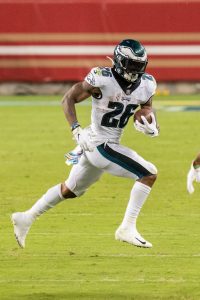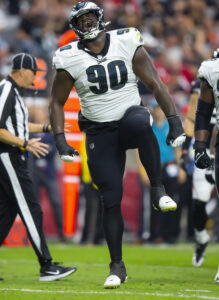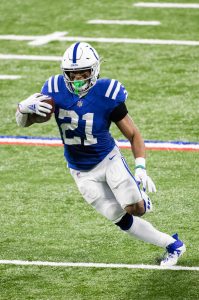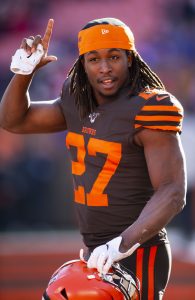The league’s top rushing offense in yards and touchdowns from last season, and this season’s last remaining unbeaten team, was still looking to get better by the trade deadline. The Eagles were able to acquire some pass rushing help, adding defensive end Robert Quinn in a trade with the Bears, but despite attempts at multiple prospects, they were unable bring in a big name at running back, according to Ralph Vacchiano of Fox Sports. 
Last year’s top rushing team was led by then-second-year quarterback Jalen Hurts and his 784 rushing yards. A number of running backs contributed behind Hurts, the main contributor being lead back Miles Sanders with his 754 rushing yards. Boston Scott was next on the depth chart, starting four of the five games Sanders missed and adding 373 yards on 87 carries. After spending much of the beginning of the year on the practice squad, Jordan Howard came up to the active roster and rushed for 406 yards on one less carry than Scott. Then-rookie Kenneth Gainwell rounded out the group with 291 yards rushing.
So why did last year’s top rushing offense need a new running back? It appears that Philadelphia was targeting running backs that could catch passes out of the backfield. The rookie Gainwell served as the Eagles’ pass-catching back in 2021, nearly matching his rushing total with 253 yards on 33 catches. Sanders, naturally, caught some passes as the starter, as well, grabbing 26 receptions for 158 yards. According to Vacchiano, the two most talked about targets for the Eagles at the trade deadline were Browns running back Kareem Hunt and former Colts running back Nyheim Hines.
Hunt displayed his proficiency as a pass catching back during his early years in Kansas City. Hunt’s two years with the Chiefs were his biggest receiving seasons with 455 yards on 53 receptions as a rookie and 378 yards on 26 catches in Year 2. Since leaving Kansas City, Hunt has taken the backseat to Nick Chubb in Cleveland. The Browns expected him to fill both the roles of Carlos Hyde, Chubb’s primary backup, and Duke Johnson, the team’s pass catching specialist out of the backfield. Although Chubb does a good amount of receiving himself in Cleveland, Hunt has, for all intents and purposes, filled those roles when available.
Hines has cut his teeth in the NFL as a pass catching running back. In five years since coming out of NC State, he has accumulated more receiving yards (1,725) than rushing yards (1,205). Hines has spent his entire NFL career with the Colts and was reportedly a favorite of Eagles head coach Nick Sirianni, who served as Hines’s offensive coordinator from 2018-2020.
Regardless, the trade deadline has come and passed, and neither Hunt nor Hines reside in Philadelphia. Hunt stayed put, remaining in Cleveland to back up Chubb in an offense that will soon see the return of Deshaun Watson. Hines is no longer in Indianapolis, though, after being the main piece in a trade between the Colts and Bills. The Bills were similarly looking for diversity in their backfield which sported Devin Singletary, Zack Moss, and rookie James Cook, none of whom are prolific in the passing game. Now, with Hines, the Bills have a prime pass catching threat out of the backfield to compliment Singletary and Cook (Moss was sent to Indianapolis in the trade).
The Eagles will roll forward with what’s worked for them this year and last. Hurts still remains a large part of the rushing attack, although he no longer leads the team. The starter, Sanders, has really taken charge of the group, leading the team with 563 rushing yards through seven games so far this season. Gainwell and Scott have split carries behind Sanders to fairly limited success. A new face to compliment Sanders in the running backs room would’ve filled a slight hole in the roster of what looks like the team to beat in the NFC right now, but the Eagles didn’t deem the solutions worth the cost it would take to acquire them. They’ll move forward with the team they have for the rest of the year.



